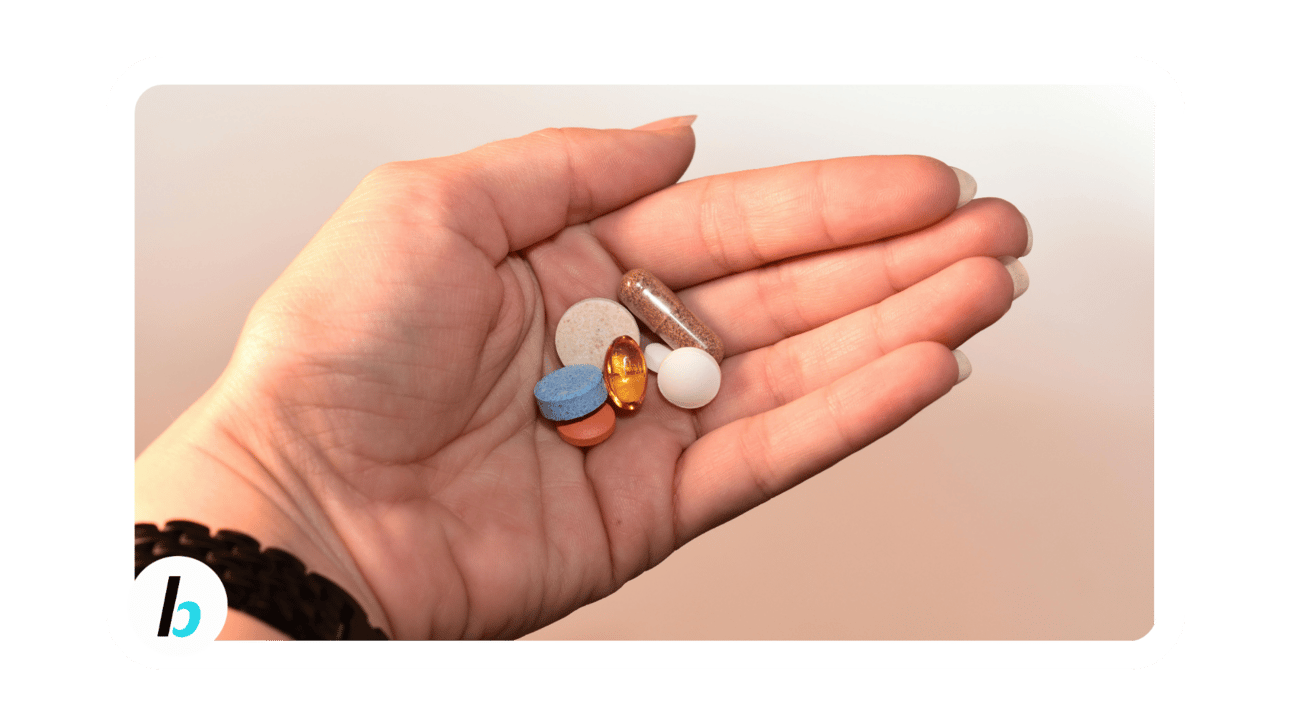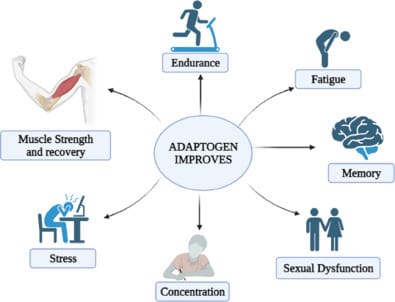Hey fitness nerds!
Thank you all {{active_subscriber_count}} of you!
Welcome to the final installment of our "What Fitness Over 30 Should Really Look Like" series!
In parts one and two, we covered redefining fitness goals and building a balanced workout routine.
Today, we'll complete the trilogy with a comprehensive nutrition plan specifically designed for thriving after 30.
Read 🔽 below!
🥑
IN LESS THAN 10 MINUTES WE WILL COVER:
Weekly Insights:
Nutrition Plan After 30 (Part 3 out of 3)
Article Explained Simple: What Causes Beer Belly
Top 3 Adaptogenic Supplements
Homemade High Protein Hummus Recipe
Nutrition Plan After 30

Your nutritional needs undergo significant shifts after 30, yet most diet advice doesn't account for these age-specific changes.
The nutrition strategy that worked in your twenties often becomes progressively less effective as hormonal profiles, metabolism, and lifestyle factors evolve.
The most noticeable metabolic change after 30 is a gradual decrease in basal metabolic rate roughly 1-2% per decade. This decline isn't primarily due to ageing itself but rather to lifestyle factors that become more common: decreased activity, increased stress, and reduced muscle mass.
The practical impact is that your caloric needs decrease, often by 100-200 calories per day compared to your twenties, requiring either increased activity or decreased consumption to maintain weight.
Protein requirements actually increase after 30, contrary to the common assumption that younger, growing bodies need more protein. Research shows that adults over 30 require approximately 1.2-1.6 grams of protein per kilogram of body weight daily to combat age-related muscle loss, compared to the 0.8g/kg recommendation for younger adults.
This higher protein intake supports muscle maintenance, promotes satiety, and helps manage weight more effectively.
Meal timing becomes more important with age. Your body's insulin sensitivity is how efficiently cells respond to insulin's signal to absorb glucose and naturally decreases after 30. This means consuming large amounts of carbohydrates in single sittings can lead to sharper blood sugar spikes and subsequent crashes. Spreading your intake across 3-4 properly structured meals typically produces better energy levels and body composition results than either grazing throughout the day or practising extended fasting for most people in this age group.
Micronutrient needs evolve significantly after 30, requiring more attentive consideration than the sometimes one-dimensional focus on macronutrients. Several nutrients deserve particular attention:
Magnesium absorption decreases with age, yet requirements may increase due to higher stress levels common in this life stage. This mineral affects over 300 enzyme systems in the body, including those regulating blood pressure, muscle function, and blood sugar control. Rich sources include dark leafy greens, nuts, seeds, and legumes.
Vitamin D levels tend to decline after 30 due to decreased production in the skin and often reduced sun exposure. Beyond bone health, adequate vitamin D is crucial for immune function, mood regulation, and even muscle performance.
Most adults benefit from supplementation, especially during winter months or in northern latitudes.
B vitamins, particularly B12, become more difficult to absorb as stomach acid production naturally decreases with age. These vitamins are critical for energy production, nervous system function, and red blood cell formation. Regular consumption of eggs, fish, meat, and fortified foods helps maintain adequate levels.
Antioxidant requirements increase after 30 as the body's natural defense against oxidative stress becomes less efficient. Colorful fruits and vegetables provide these protective compounds, with berries, dark leafy greens, and orange/red produce being particularly rich sources.
Anti-inflammatory foods become increasingly important as chronic, low-grade inflammation rises with age. This silent process contributes to most age-related diseases and even accelerated ageing itself.
A diet rich in omega-3 fatty acids (fatty fish, walnuts, flaxseeds), colourful produce, and spices like turmeric and ginger helps combat this inflammation.
Alcohol tolerance typically decreases after 30 as liver metabolism changes and body composition shifts. The calories and metabolic impact of alcohol become more significant, often contributing to the middle-age spread. Most adults benefit from limiting alcohol to 1-2 drinks daily at most, with several alcohol-free days each week.
Practically implementing these principles requires a sustainable approach rather than rigid rules. Build your meals around a palm-sized portion of quality protein (roughly 25-30g), add a fist-sized portion of vegetables, incorporate a cupped handful of complex carbohydrates, and include a thumb-sized portion of healthy fats.
This template provides approximately the right macronutrient proportions for most adults over 30 while ensuring adequate micronutrient intake.
Hydration deserves more attention after 30 as the thirst mechanism becomes less sensitive and kidney function naturally declines slightly. Aim for roughly 30-35ml of water per kg of body weight daily, with higher amounts needed during exercise or hot weather.
The most effective nutrition plan after 30 is one that addresses these physiological changes while remaining adaptable to your individual needs and lifestyle.
Rather than chasing perfect macronutrient ratios or following fashionable diet trends, focus on sustainable habits that support your energy, performance, body composition, and long-term health.
This approach sets the foundation for not just surviving but thriving in your thirties, forties, and beyond.
Hands down, the best tool for fitness, sleep, and overall wellness.
GET 1 Month for FREE to try it out, together with a free band.


Fitness and health enthusiasts - We have a lot of things in store for you!
Check out busybody.io - and join the waitlist for our brand-new AI health app.
Article of the Week
Article Explained Simple: What Causes Beer Belly
Results revealed that beer consumption alone was not the primary cause of the characteristic protruding belly. Rather, three key factors worked together:
First, alcohol of any type (not just beer) disrupts normal fat metabolism. The liver prioritizes processing alcohol over other nutrients, causing temporarily impaired fat burning and increased storage, particularly in the abdominal region.
Second, alcohol consumption was strongly associated with poor dietary choices. Participants consuming 2+ alcoholic drinks daily consumed an average of 433 more calories on drinking days from both the alcohol itself and accompanying high-calorie foods.
Third, and most significant, was the hormonal impact. Regular alcohol consumption was shown to reduce testosterone levels while raising cortisol (stress hormone) levels = a combination that specifically promotes visceral fat storage deep in the abdomen around organs.
Fascinating Fact:
Visceral fat cells in the "beer belly" are metabolically different from subcutaneous fat elsewhere on the body = they have four times more cortisol receptors, making them particularly responsive to stress hormones elevated by alcohol consumption.
We have also started a referral program where you can earn prizes for referring your friends to this newsletter.
What other topics do you want me to write about?
Top 3 Adaptogenic Supplements

Ashwagandha
This ancient herb helps the body resist physical and mental stress. Research shows it reduces cortisol levels by an average of 27% while supporting thyroid function and testosterone production.For optimal results, look for products standardized to 5% withanolides, with effective doses ranging from 300-600mg daily.
Benefits typically become noticeable after 2-3 weeks of consistent use, with anxiety reduction often being the first noticeable effect.Rhodiola Rosea
This Arctic root enhances physical and cognitive performance under stress. It works by balancing stress hormones while increasing oxygen utilization in muscles and brain tissue.Clinical studies show it begins working within 30 minutes of consumption, making it ideal before high-pressure situations.
The recommended dose is 200-400mg of a standardized extract (3% rosavins, 1% salidroside) taken early in the day to avoid sleep disruption.Holy Basil (Tulsi)
This adaptogen specifically targets stress-related inflammation while supporting healthy blood sugar and lipid levels. It's particularly effective for stress-induced digestive issues and mental fatigue.For therapeutic benefits, consume 300-500mg of extract (standardized to 2.5% ursolic acid) or drink 1-2 cups of tulsi tea daily. Results typically develop gradually over 3-4 weeks of consistent use.
These adaptogens work by modulating the body's stress response systems rather than forcing specific physiological effects, making them suitable for long-term use without dependency concerns.
Vote below to choose the diet for next week’s recipe
Homemade High Protein Hummus Recipe (makes 8 servings)
This reinvented classic delivers all the flavour of traditional pecan pie with 40% less sugar and added protein from Greek yoghurt and egg whites.
The result is a dessert you can genuinely enjoy without the typical sugar crash.
This recipe was created in 2 minutes with the BusyBody App. Click the button for free access to the app.

Macros per serving
Total Calories: 165 kcal
Protein: 9 g
Carbohydrates: 17 g
Sugars: 1 g
Fat: 8 g
The Ingredients
1 can (15oz/425g) chickpeas, drained and rinsed
2 tablespoons Greek yoghurt (full-fat)
2 tablespoons tahini
2 tablespoons extra virgin olive oil
2 tablespoons fresh lemon juice
1 large garlic clove, roughly chopped
1/2 teaspoon ground cumin
1/2 teaspoon salt
1/4 teaspoon black pepper
2-3 tablespoons cold water
For garnish: paprika, olive oil, chopped parsley
Instructions
For ultra-smooth hummus, start by removing the skins from the chickpeas. After draining and rinsing, gently rub them between paper towels to loosen the skins, then pick them off. This step takes about 5 minutes but dramatically improves texture.
In a food processor, combine the garlic, lemon juice, and salt. Process for 30 seconds to create a garlic paste before adding other ingredients. This prevents harsh garlic chunks in the final product.
Add the tahini, Greek yoghurt, and olive oil. Process for 30 seconds until the mixture is light and creamy.
Add the skinned chickpeas and cumin. Process for 1 minute, then stop to scrape down the sides.
With the processor running, slowly add cold water until the hummus reaches your desired consistency. For ultra-smooth results, process for a full 2 minutes.
Transfer to a serving bowl, create a shallow well in the center, and drizzle with additional olive oil. Sprinkle with paprika and chopped parsley.
Store in an airtight container in the refrigerator for up to 5 days. If the hummus thickens during storage, simply stir in a tablespoon of cold water before serving.
This hummus pairs perfectly with fresh vegetables, whole grain crackers, or as a protein-boosting spread for sandwiches and wraps.
Make your dream of working online a reality and start a newsletter - join beehiiv for free and don’t pay any renewal until you grow your subscriber base >2500 subscribers.
I’ve personally tried plenty of other platforms and Beehiiv is hands down the best and easiest to use.

